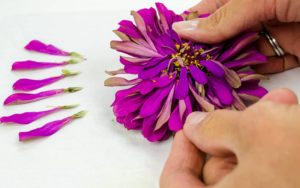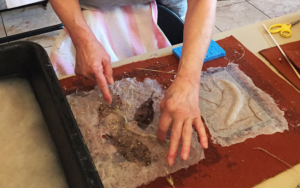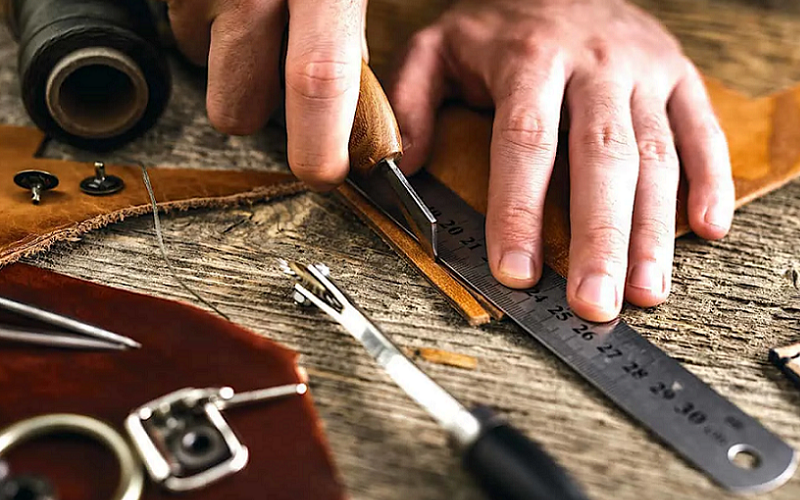
Leatherworking is a timeless craft that has been practiced for thousands of years. From simple pouches and sandals to ornate armor and saddles, leather has been used to create a wide variety of useful and beautiful items throughout history. Today, leatherworking is still a popular hobby and profession, with artisans creating stunning leather goods that range from wallets and belts to custom bags and shoes.
What Is Leatherworking?
Leatherworking is a craft that involves creating useful and decorative items from animal hides, typically those of cows, goats, and sheep. Leatherworking has been around for thousands of years and is a highly respected art form. Historically, leather has been used to create everything from clothing and footwear to tools and furniture.
Leatherworking is a versatile craft that can be used to create a wide range of items, from simple wallets and belts to more complex items like bags, shoes, and furniture. Some leatherworkers specialize in certain types of products, such as saddles or armor, while others create custom pieces for clients.
In recent years, there has been a growing interest in sustainable leatherworking, which involves using environmentally friendly tanning methods and sourcing leather from ethical and responsible sources. This has led to the development of new techniques and materials, such as vegetable-tanned leather and leather made from waste products.
Leatherworking can be a rewarding hobby or a full-time profession. Many leatherworkers sell their products online or at craft fairs and markets, while others work in the fashion or furniture industries. Whether you are a beginner or an experienced leatherworker, there is always something new to learn and create in the world of leatherworking.
The Basics of Leatherworking
Leatherworking is a craft that involves working with animal hides to create useful and decorative items. The process of leatherworking can be broken down into several stages, including tanning, cutting, stitching, dyeing, and finishing.
The first step in leatherworking is tanning, which involves turning raw animal hides into leather. Tanning can be done using several methods, including vegetable tanning, chrome tanning, and oil tanning. Each method has its own benefits and drawbacks, and the type of tanning used can affect the final appearance and durability of the leather.
Once the hide is tanned, it is ready to be cut and shaped into the desired item. Cutting leather requires specialized tools, such as a leather knife, to create precise shapes and sizes. Stitching is done using a waxed thread and a needle, and requires skill and practice to create a strong and durable seam.
Dyeing adds color to the leather and can be done using natural or synthetic dyes. The type of dye used can affect the final appearance and texture of the leather. Finishing is the process of adding texture, shine, or protection to the leather. Common finishing techniques include burnishing, polishing, and applying leather conditioner or wax.
When choosing leather for a project, there are several factors to consider. Thickness, texture, and color can all affect the appearance and durability of the final product. Thicker leather is better suited for heavy-duty items like bags and belts, while thinner leather is better for more delicate items like wallets and keychains. Texture and color can be used to create unique and personalized items.
Basic leatherworking projects for beginners include keychains, wallets, and bracelets. These projects require only basic tools and techniques, making them a great way to get started with leatherworking. However, leatherworking can be dangerous, so it’s important to take safety precautions. Always wear protective gloves and goggles when working with leather, and make sure to use sharp tools properly to avoid injury.

Advanced Leatherworking Techniques
Advanced leatherworking techniques are the next step for leatherworkers who have already mastered the basics of the craft. These techniques require a greater level of skill and experience, and can be used to create more complex and ornate items, as well as add unique textures and designs to leather goods.
One advanced technique is carving and tooling leather. This involves using specialized tools to create patterns and designs on the surface of the leather. Leatherworkers can use this technique to create intricate floral or geometric designs, as well as images or text. Carving and tooling requires skill and practice, as well as patience and attention to detail.
Another advanced technique is making leather bags, wallets, belts, and other items. Creating more complex leather items requires advanced cutting and stitching techniques, as well as an understanding of how to create functional and durable designs. These items may also require additional components, such as zippers, buckles, and straps.
Molding leather is another advanced technique that involves shaping the leather into a specific form or structure, such as a mask or armor piece. This technique requires an understanding of how to work with wet leather and how to create molds or forms to shape the leather around.
Leather can also be used in home décor, such as for upholstery or wall hangings. This requires an understanding of how to work with larger pieces of leather, as well as how to create functional and stylish designs.
Advanced leatherworking techniques require specialized tools, such as stamping tools, embossing wheels, and leather molds. These tools can be expensive, and require skill and practice to use effectively. However, the results can be stunning, with unique and personalized items that showcase the skill and creativity of the leatherworker.
In recent years, there has been a growing interest in sustainable and ethical leatherworking, which has led to the development of new techniques and materials. For example, some leatherworkers use vegetable-tanned leather, which is made using natural plant-based tannins instead of chemicals. Others use leather made from waste products, such as fish skins or pineapple leaves, to create eco-friendly and innovative leather goods.
Advanced leatherworking techniques are not just for professionals, but can be learned by anyone with dedication and practice. Online courses, local classes, and apprenticeships are all great ways to learn new techniques and improve your skills. Whether you are a beginner or an experienced leatherworker, there is always something new to learn and create in the world of leatherworking.
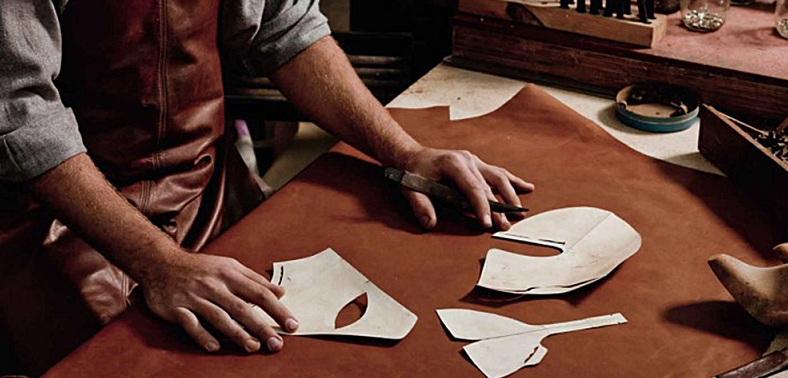
Choosing Leather for Your Project
Choosing the right leather for your project is an important step in leatherworking. The type of leather you choose can affect the final appearance, texture, and durability of your item. Here are some factors to consider when choosing leather:
- Type of Leather: There are many different types of leather, each with unique characteristics and uses. Some common types of leather include full-grain leather, top-grain leather, suede, and patent leather. Full-grain leather is the highest quality and most durable type of leather, while suede is softer and more flexible. Consider the specific qualities of each type of leather when choosing the one that best suits your project.
- Thickness: The thickness of the leather can affect the strength and durability of your item. Thicker leather is better suited for heavy-duty items like bags and belts, while thinner leather is better for more delicate items like wallets and keychains. Consider the intended use of your item when choosing the thickness of your leather.
- Texture: The texture of the leather can affect the appearance and feel of your item. Leather can have a smooth or rough texture, and may be embossed with patterns or designs. Consider the visual and tactile qualities you want in your item when choosing the texture of your leather.
- Color: Leather can be dyed in a wide range of colors, from natural tones to bright hues. Consider the desired color scheme of your item when choosing the color of your leather. It’s also important to note that certain types of leather may take dye differently than others.
- Sustainability:
Leather is a natural material, and the environmental impact of leather production can vary depending on the tanning method and source of the leather. Consider sustainable and ethical leather options, such as vegetable-tanned leather or leather made from waste products, when choosing your leather.
When buying leather, make sure to inspect the quality of the leather before making a purchase. Look for leather that is uniform in color and texture, with no wrinkles or blemishes. Check the flexibility and thickness of the leather to ensure it’s suitable for your project. It’s also important to buy the correct amount of leather for your project to avoid wasting materials.
Choosing the right leather for your project can take time and research, but it’s an important step in creating a high-quality and durable item. By considering factors such as type, thickness, texture, color, and sustainability, you can choose the leather that best suits your needs and preferences.
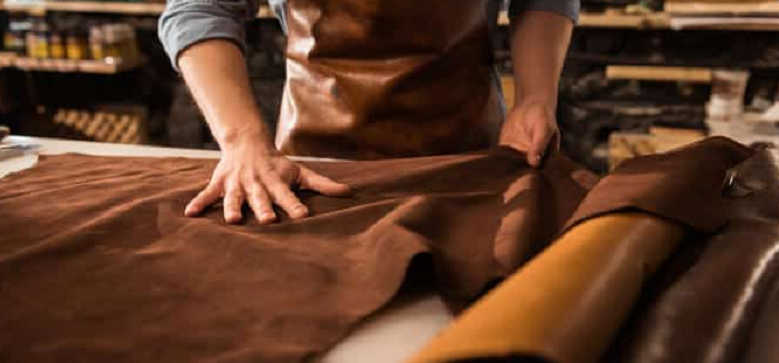
Caring for Leather Goods
Leather goods are a beautiful and durable addition to any wardrobe or home decor. However, to maintain their appearance and ensure their longevity, proper care is necessary. Here are some key tips for caring for leather goods.
Firstly, regular cleaning is essential to keep leather goods free from dirt, dust, and other debris that can accumulate on the surface. This can be achieved by using a soft-bristled brush or a damp cloth to gently clean the leather. It is important to avoid using harsh chemicals or scrubbing too hard, as this can damage the leather.
Secondly, leather can become dry and brittle over time, especially if exposed to sunlight or heat. To prevent this, use a leather conditioner to moisturize and protect the leather. A soft cloth can be used to apply the conditioner, and the leather should be buffed gently after application.
Thirdly, leather should be kept away from water and other liquids, as they can cause stains and damage. In the event that leather goods do become wet, they should be left to dry naturally, and not be exposed to direct heat sources like hair dryers or heaters.
Fourthly, proper storage is important to protect leather goods from damage. Leather should be stored in a cool, dry place, away from direct sunlight and heat sources. Avoid storing leather items in plastic bags, as this can cause the leather to dry out and crack. Instead, use a breathable fabric or leather bag to store leather goods.
Fifthly, leather can be vulnerable to scratches and other damage, so using protection when carrying or wearing leather items is important. Protective cases or covers can be used to protect leather phone or laptop cases, or to cover leather furniture.
Lastly, if leather goods become heavily soiled or stained, professional cleaning may be necessary. It is important to find a reputable leather cleaning service and follow their care instructions after the cleaning is complete.
By following these care tips, leather goods can maintain their appearance and durability for many years. Regular cleaning and conditioning, proper storage and protection, and professional cleaning if necessary, can all help to keep leather goods looking their best.
Where to Learn Leatherworking
There are several options available for those interested in learning leatherworking, from online resources to in-person classes and workshops. Here are some of the most common ways to learn leatherworking:
- Online Resources:
There are numerous online resources available for those looking to learn leatherworking, such as YouTube tutorials, online courses, and instructional websites. These resources can be a great way to learn the basics of leatherworking, as well as more advanced techniques. - Local Classes and Workshops:
Many communities offer local classes and workshops on leatherworking, often hosted by community centers, art studios, or crafting stores. These classes can provide hands-on experience with leatherworking tools and techniques, and may also offer opportunities to connect with other leatherworkers in your area. - Apprenticeships:
Some experienced leatherworkers may offer apprenticeships or mentorship programs to help others learn the craft. This is a great way to get personalized instruction and guidance, and can also provide opportunities to learn about the business side of leatherworking. - Leatherworking Schools:
There are several leatherworking schools and programs available for those looking for a more formal education. These programs can range from short-term workshops to multi-year degree programs, and provide comprehensive instruction on all aspects of leatherworking. - Leatherworking Conferences:
Leatherworking conferences and events are a great way to connect with other leatherworkers and learn from experienced professionals. These events often offer workshops, lectures, and demonstrations on a wide range of leatherworking topics.
When choosing a method for learning leatherworking, make sure to consider your own learning style, schedule, and budget. Online resources and local classes may be more accessible and affordable, while apprenticeships and leatherworking schools may provide more comprehensive instruction and opportunities for networking.
In addition to these learning options, it’s also important to invest in the right tools and materials for leatherworking. Quality leatherworking tools and materials can make a big difference in the final appearance and durability of your leather goods, and can also make the process of learning more enjoyable and rewarding.


